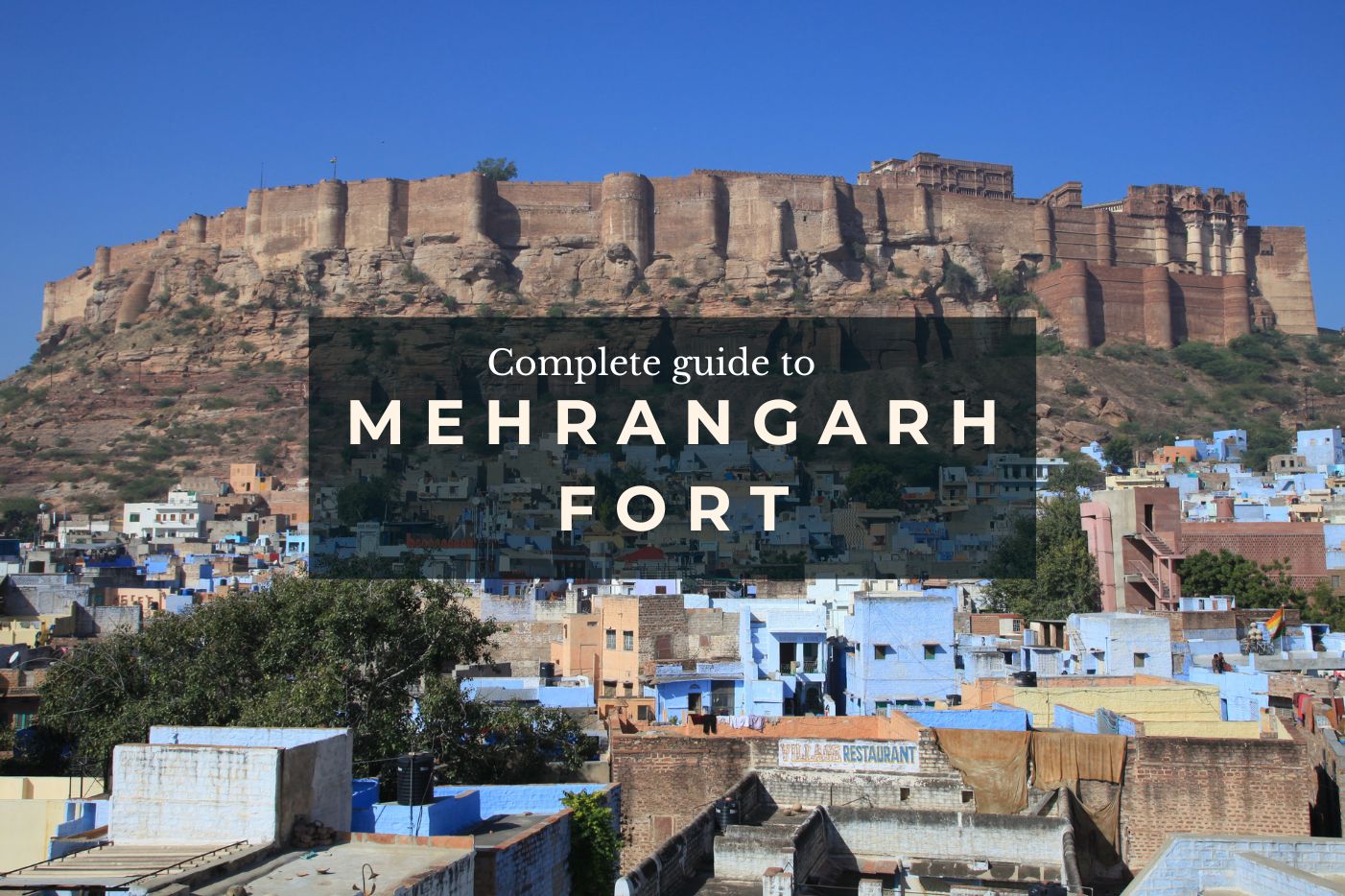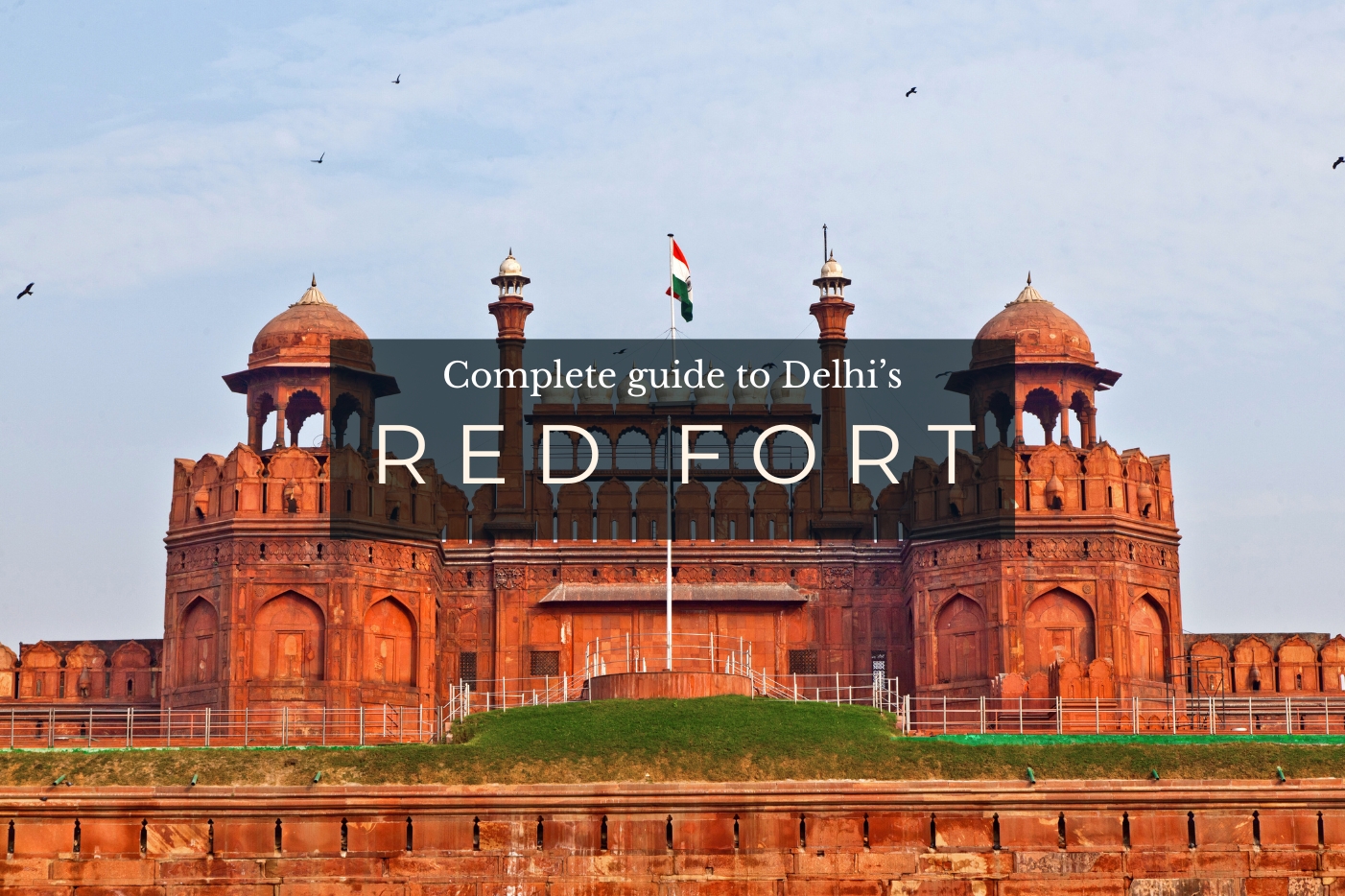The Kanheri Caves are a collection of ancient temples, some up to 2000 years old, carved into a hill on the northern outskirts of Mumbai.
They aren’t the only ancient rock-carved temples in the city, with others like the Elephanta and Mahakali Caves, but they are without a doubt the best of them, and one of the top historical attractions in Mumbai.
These Buddhist cave temples are located inside Sanjay Gandhi National Park. They make for a great day-trip escape from the chaos of downtown Mumbai, and are a must-visit for history buffs in Mumbai.
Despite being located next to one of the world’s largest cities, the Kanheri Caves are somewhat of a niche attraction, and information about this amazing historical site is hard to come by.
Drawing from my own experience visiting the site, I’ve created this complete guide to the Kanheri Caves, which provides you with everything you need to know to visit these ancient temples on Mumbai’s doorstep.
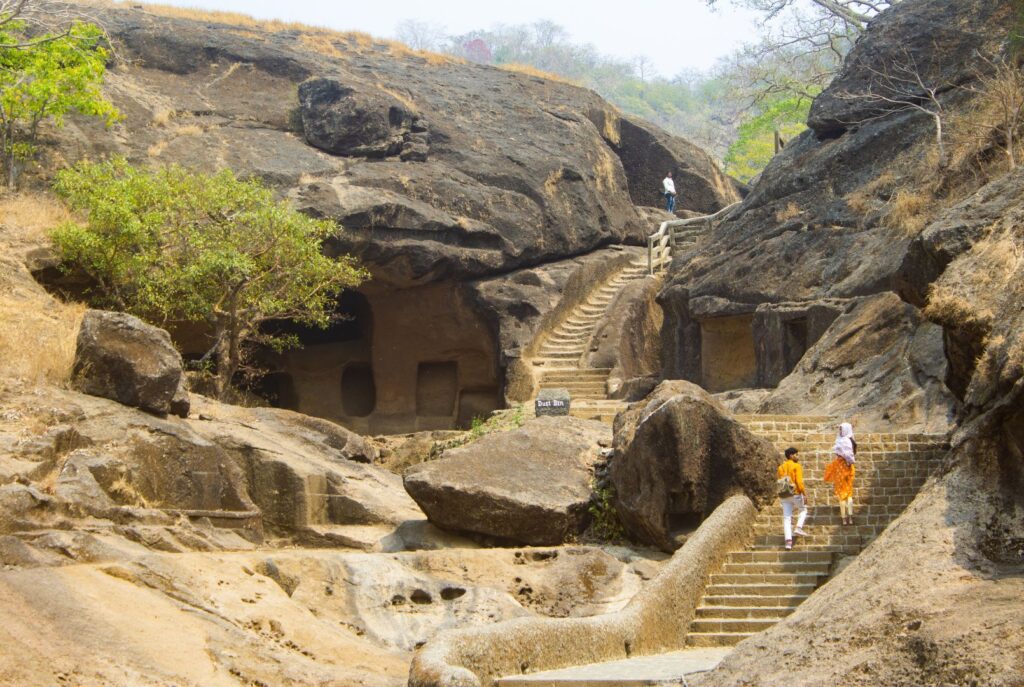
Table of Contents
Brief History of the Kanheri Caves
To get the most value from a visit to a historical site, it helps to first know what it is and how it came to be. So, for those interested, here’s a little backstory…
The Kanheri Caves trace their origins back to the 1st century CE. This was a time when Buddhism was starting to spread rapidly across India after the Mauryan Emperor Ashoka adopted it as the state religion.
This area near modern-day Mumbai became a hotspot for Buddhists, and they soon began carving temples into the side of a basalt hill. The dark colour of the rocky hill led to it being named Kanheri, which translates to ‘black mountain’.
Here they built a mix of Viharas (places for living) and Chaityas (places for worship). Over time the Kanheri Caves became a centre for learning – a university for Buddhists.
The fine details of the site’s long history are largely unknown. What we do know is that the settlement continued to grow and was so popular that it attracted Buddhist worshipers from afar. In fact, in Cave 90 you can find a Japanese inscription, carved by a worshipper who travelled all that way.
By the late middle ages, the Kanheri Caves were mostly abandoned , likely due to the decline of Buddhism and the rise of Hinduism & Islam in India, as well as the arrival of the Portuguese to the area.
It wasn’t until the 19th century that the British started to restore the site, and by 2019 it became a UNESCO World Heritage Site.
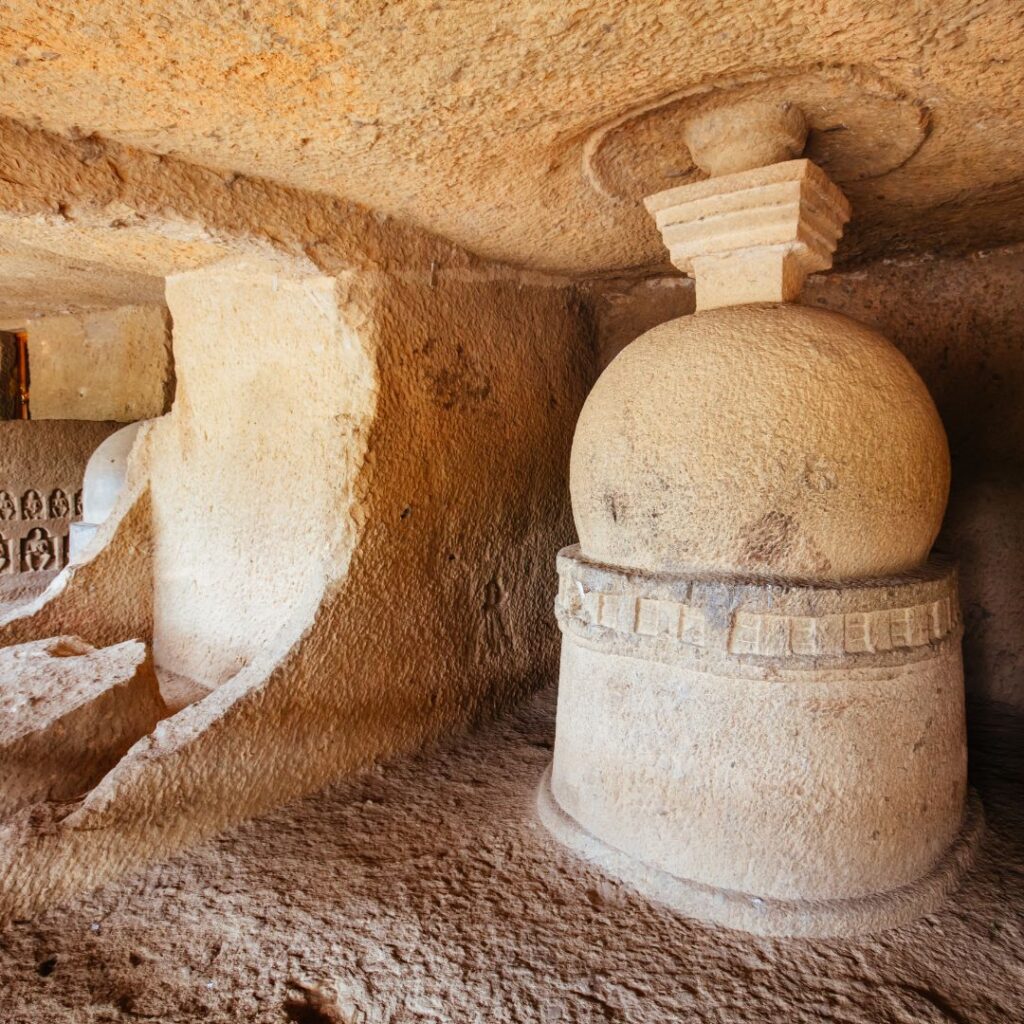
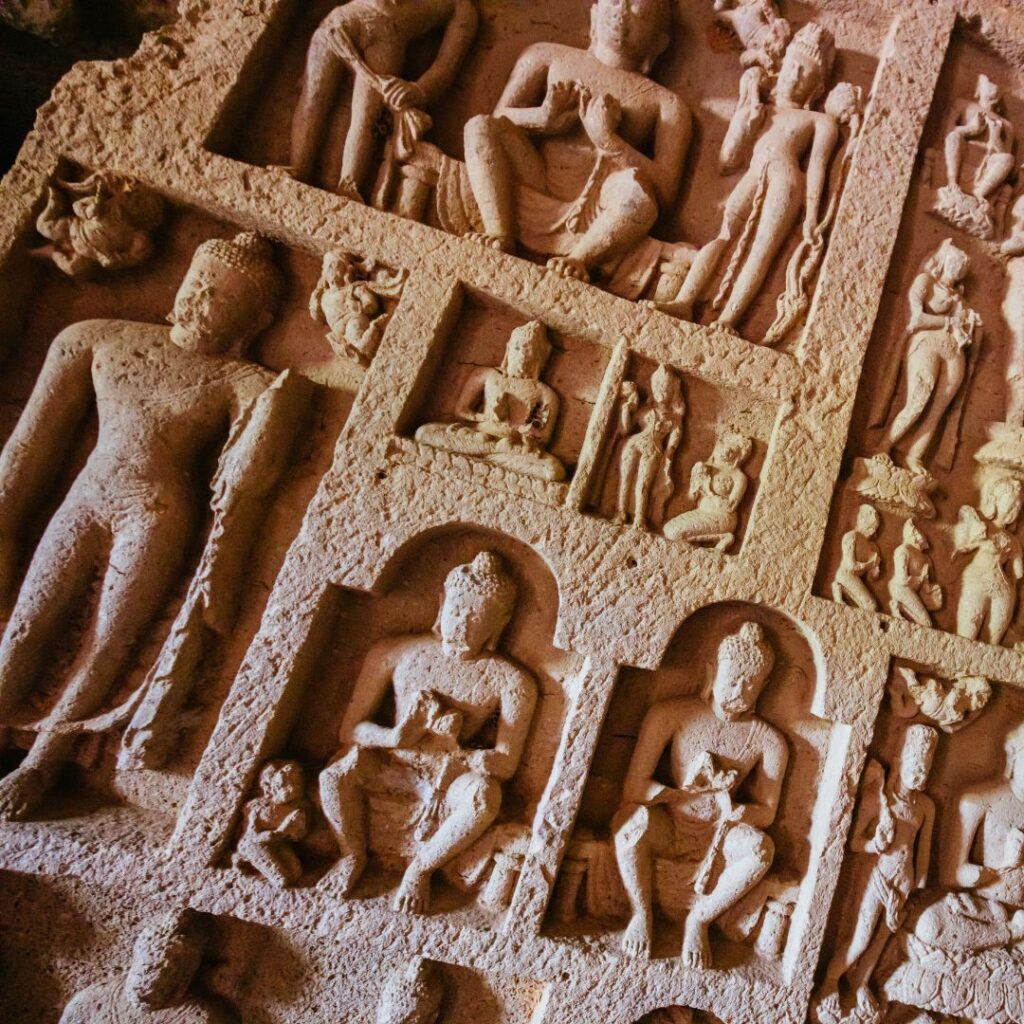
Best time to visit the Kanheri Caves
The Kanheri Caves can be visited all year round, but the time of year you visit can make a big difference to both the scenery and the daytime heat.
Mumbai, and the Kanheri Caves, are located in a region of India known as the Konkan Coast, which can look very different depending on the season.
If you visit the Kanheri Caves during the dry season (between November and February), the humidity will be much more bearable, but the landscape will look brown and dry.
If you visit during the wet season (March to October), you’ll experience high humidity with a higher likelihood of rain, but will also get to see the Kanheri Caves in their full glory – covered in lush greenery and with its water collection system being put to use.
While there is no right or wrong answer, I can tell you from experience not to underestimate the humidity of the wet season. Visiting the Kanheri Caves involves a lot of walking outdoors, and this can make your visit an uncomfortable experience.
If you have the luxury of choosing a time of year to visit the Kanheri Caves, I’d recommend visiting in the dry season (November to February).
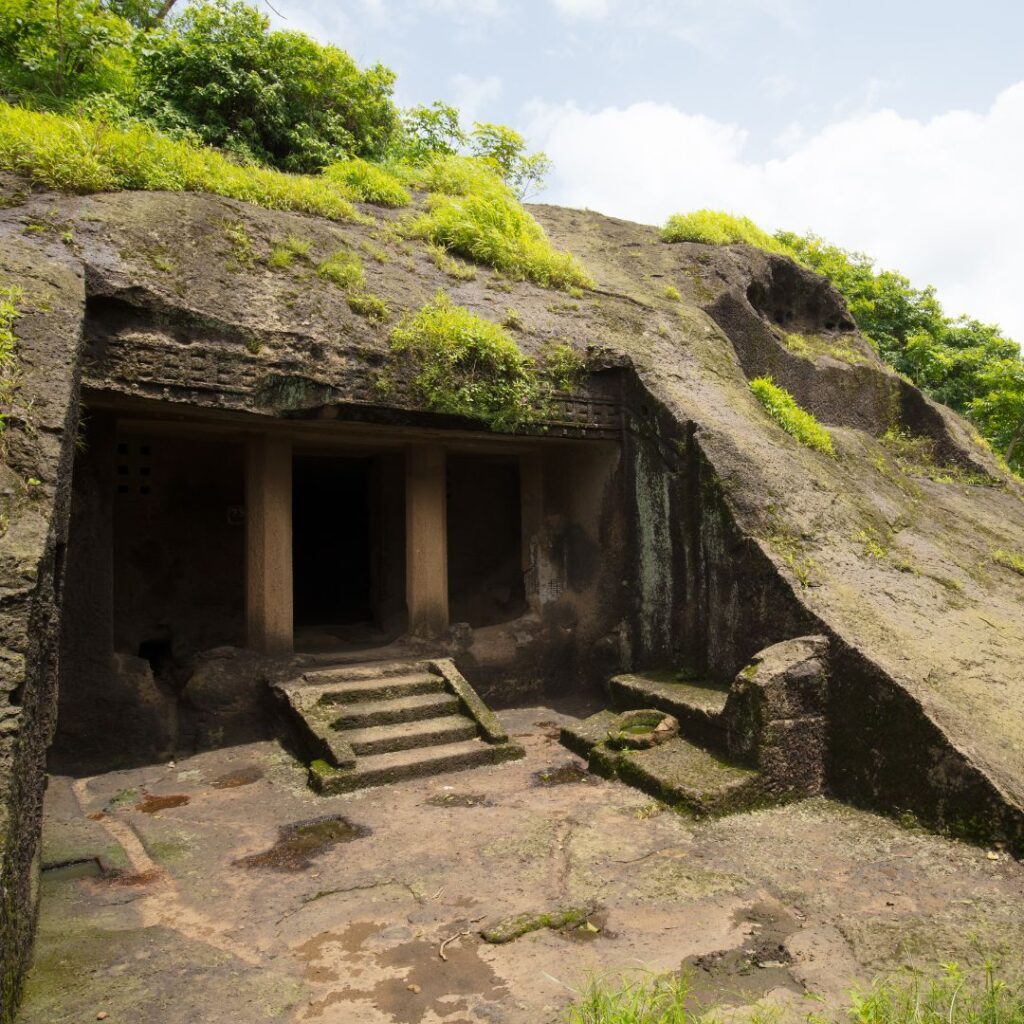
How to get to the Kanheri Caves
How to get to Sanjay Gandhi National Park
The Kanheri Caves are located in Sanjay Gandhi National Park, which can be found in the northern outskirts of Mumbai, about 15km north of the airport.
Thanks to its location, Sanjay Gandhi National Park is easily accessible. The entrance to the park can be found in the suburb of Borivali, and you have several options for getting there.
Taxi/Uber
The simplest and most practical way to reach the National Park is to hire a taxi or uber.
Unless you’re a local who speaks the language, navigating Mumbai’s public transport system is not easy. Hiring an uber or taxi removes all the hassle – without breaking the bank.
Between a taxi and an uber, the cheaper option is an uber. As with many countries, taxis in India will jack up their prices if they know you’re a tourist. Uber, on the other hand, works just like any other country and is the same price for locals and foreigners alike.
The cost will obviously depend on where you’re starting from, but you can expect an uber to cost between $7 and $15 USD to reach Sanjay Gandhi National Park from almost anywhere in the city.
Train
If you’re feeling adventurous and brave enough to take on Mumbai’s rail network, then you can reach Sanjay Gandhi National Park via train.
The nearest train station is Borivali Station, which is about a 10min walk to the park entrance.
As for which train to catch, that’s where the ‘adventurous’ part comes in.
As a foreigner who doesn’t speak the local language, figuring out what train is going where can be difficult, and online resources are very limited.
The main thing you need to know is to get on the Western Line (which passes through Churchgate and Mumbai Central) and head north until you reach Borivali, which you can see on the map below.

Tour
If you’ve got some money to burn, and want the most convenient method of reaching the Kanheri Caves, then consider booking a tour.
The best place to find Kanheri Cave tours is on getyourguide.com.
There are many different tour companies to choose from, some which will take you directly to the caves and back, while others will include other local attractions along the way, like the Golden Pagoda or a lion safari inside Sanjay Gandhi National Park.
In terms of transport, this is all covered in the tour. Most tours will pick you up directly from your hotel and drop you off at the end of the day, removing all effort of having to arrange transport on your own.
A tour to the Kanheri Caves will cost between $50 and $80 USD, depending on which one you choose and what’s included. This may sound pricey, but when you consider an uber there and back could cost you up to $30, it’s not as pricey as it seems.
A tour is certainly the most expensive way of reaching the caves. You can get yourself to the caves for a fraction of the cost, but if your budget allows it, it’s certainly the most convenient.
How to get from the park entrance to the caves
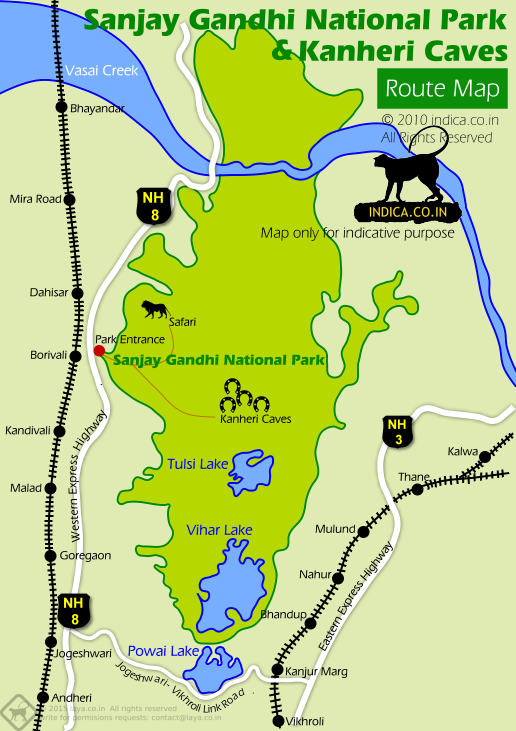
Now that you’ve reached Sanjay Gandhi National Park, you now need to reach the Kanheri Caves, which are located a few kilometres inside the park.
If you arrived with a tour, you don’t need to worry about this part as transport through the park is likely covered. If you reach the park any other way, you’ll likely be dropped off at the park entrance and are on your own from here.
From here, you have 3 options for reaching the caves…
Shuttle Bus
There is a shuttle bus service that runs from the park entrance to the Kanheri Caves – for a small fee.
But there’s a catch – the shuttle bus only runs after enough people get on the bus. If there aren’t enough bums on seats, the bus isn’t going anywhere.
You might get lucky and the shuttle bus may leave as soon as you get on it, or you might be waiting for a while for more visitors to arrive.
Is the shuttle bus worth waiting for? Well, let’s put it this way: if you don’t feel confident in walking or riding at least 5 km, then the shuttle bus is your only option.
For those with decent physical fitness and little patience, you’ll want to consider the next option…
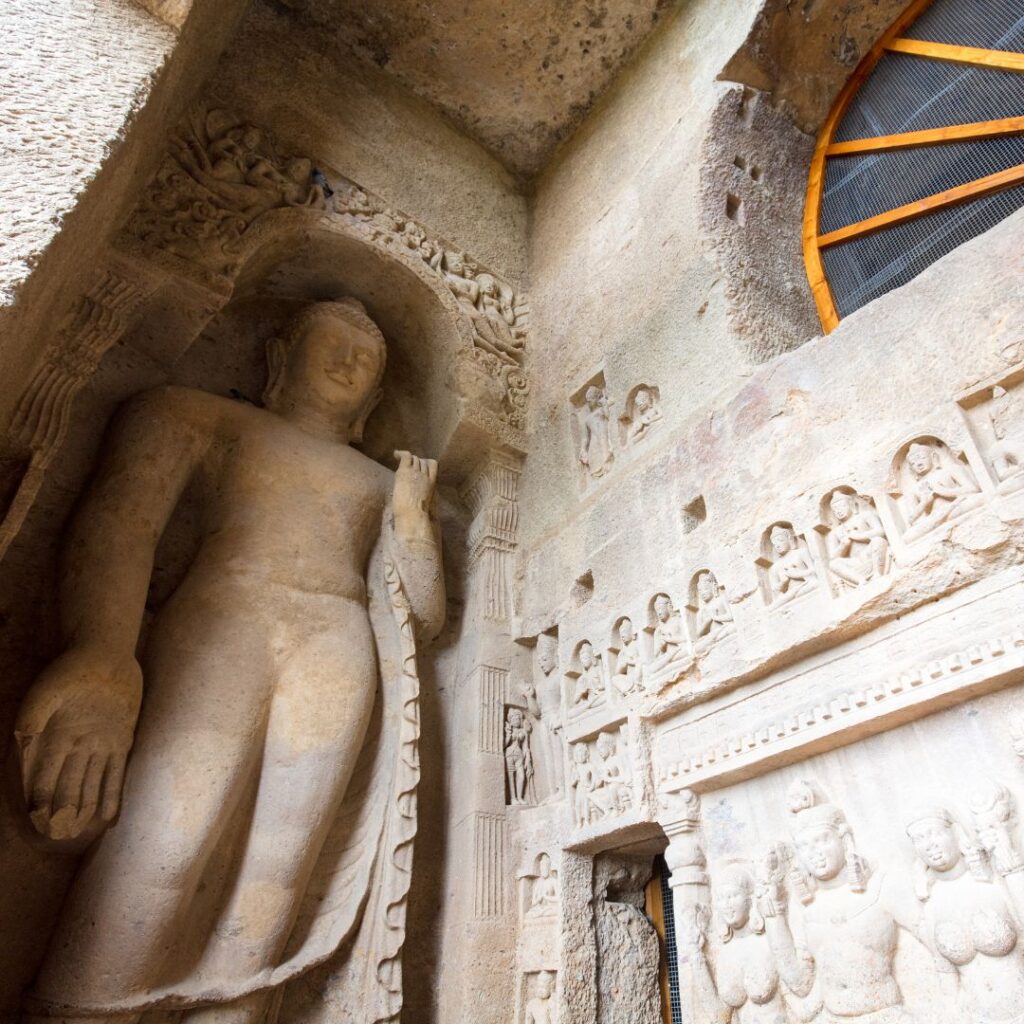
Rent a Bicycle
From a booth just beyond the ticket office, you can rent a bicycle and pedal your way through Sanjay Gandhi National Park.
If you’re up for a bit of physical activity, I highly recommend doing this. What better escape from Mumbai’s city chaos than a slow bike ride through a quiet and peaceful national park as you make your way to visit 2000-year-old temples.
When you arrive at Sanjay Gandhi National Park, you’ll see signs advertising lion and tiger safaris. So, to answer the question you’re likely wondering: no, you won’t be attacked by a tiger during your bike ride. The lions and tigers are located in a separate, fenced off area of the park – essentially in a zoo.
The monkeys on the other hand…just keep your distance and they won’t bother you.
The distance from the park entrance to the caves is about 5-6 kms – not far for a bike ride. Just keep in mind, the final stretch involves a steep hill, and you’ll probably find yourself pushing the bike for the final couple hundred metres.
TIP: Make sure you check the bike’s condition before you set off. In my experience, some had flat tires or were just in very poor condition. So make sure you choose one that’s going to get you all the way without breaking.
Walk
Lastly, you also have the option of walking from the park entrance to the Kanheri Caves.
While no one is stopping you from doing this, it’s not recommended. The distance you need to walk is about 5km, which is made even more difficult by the heat and humidity.
But hey, each to their own. It’s still an option.
Again, as mentioned above, you don’t need to worry about lions and tigers as they are found in a different, fenced off area of the park.
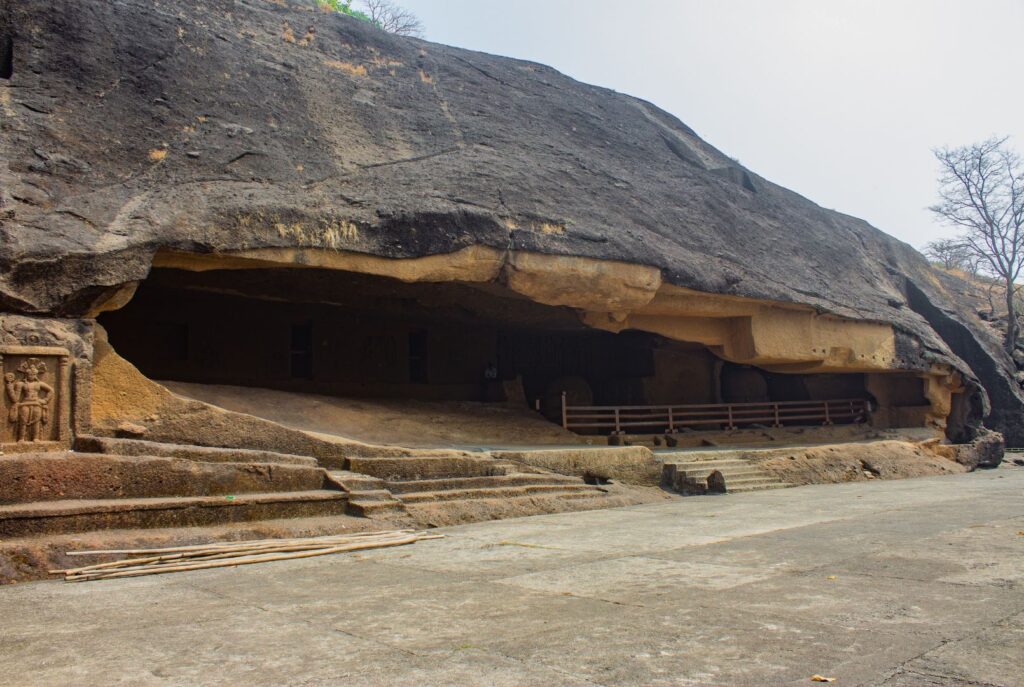
Kanheri Caves opening hours
When visiting the Kanheri Caves, there are 2 different opening hours you need to be mindful of.
Firstly, there’s the opening hours for the park, in which the caves are located. The opening hours for the Sanjay Gandhi National Park are 9am to 6pm.
Secondly, there are the opening hours for the Kanheri Caves. Because the caves are located deep within the park, they have slightly different opening hours to allow visitors to get from the caves to the park exit before it closes.
The opening hours for the Kanheri Caves are 9:30 AM to 5:30 PM, every day except Monday.
Kanheri Caves entry fees
When visiting the Kanheri Caves, there are 2 different entry fees you will need to pay.
Firstly there’s the entrance fee to the park in which the caves are located. The entrance fee for Sanjay Gandhi National Park is 85 INR for Indians, and 200 INR for foreigners.
This gets you entry into the national park, which has a bunch of different things to see and do, most of which have fees of their own. So, once you reach the caves you’ll need to pay an entry fee for this too.
The entry fee for the Kanheri Caves is also 85 INR for Indians, and 200 INR for foreigners.
So, as a foreigner you can expect to pay around 400 INR in entrance fees, which at the time of writing is about $4.80 USD.
While I aim to keep this post up to date, keep in mind that these prices are subject to change.
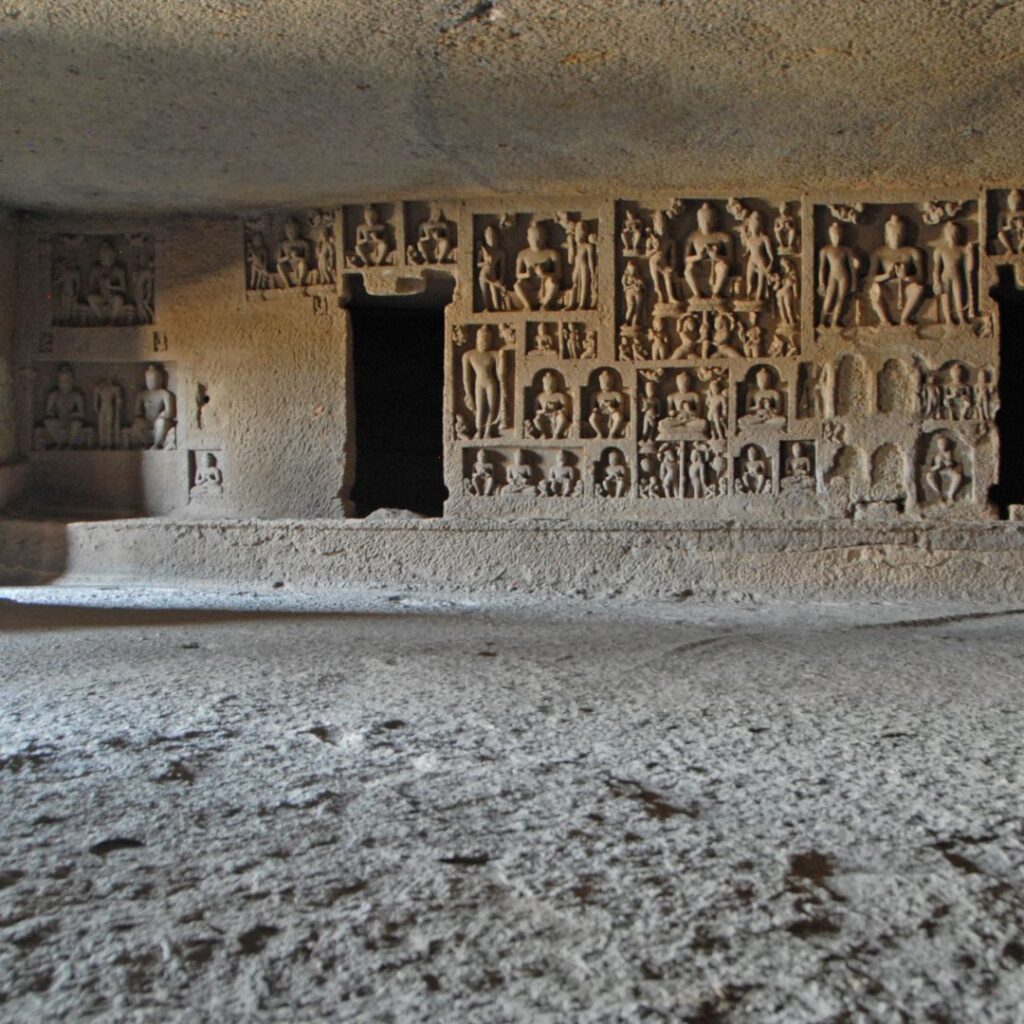
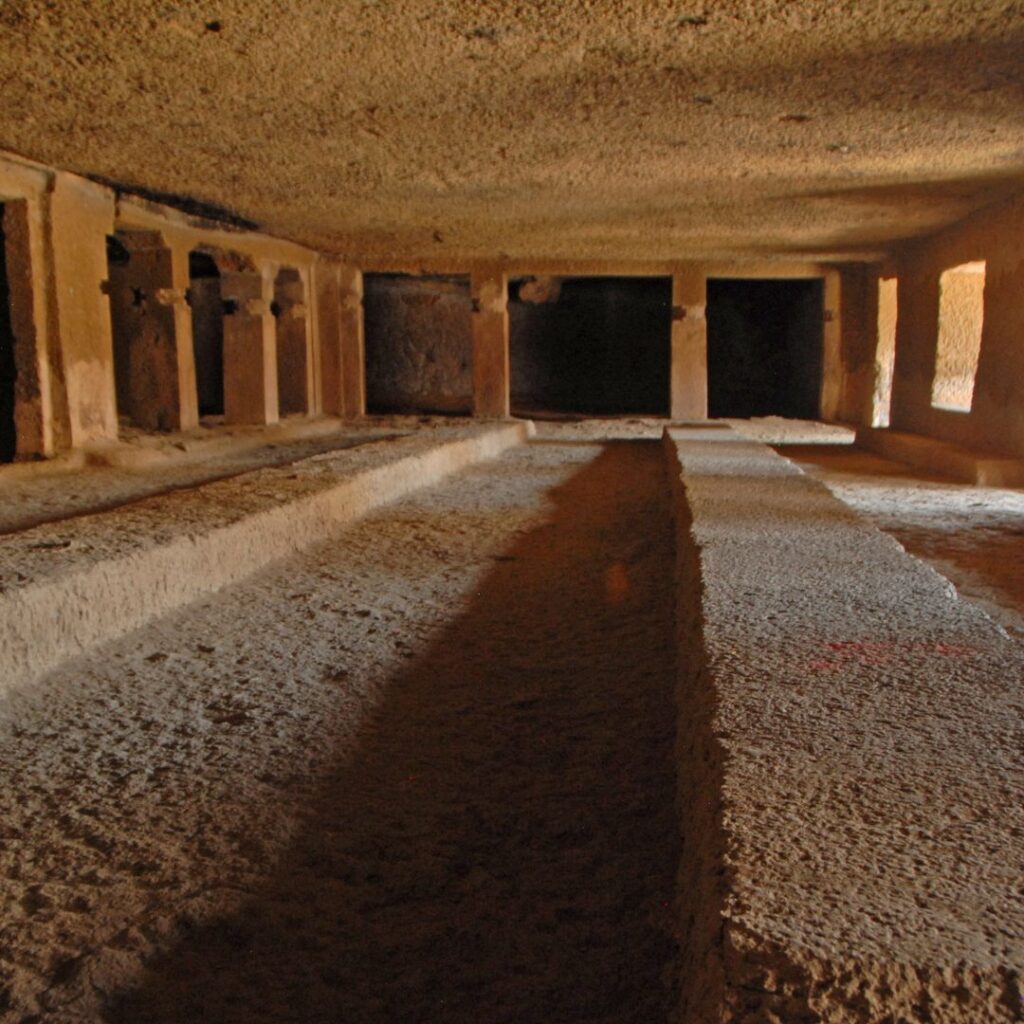
What to expect on your visit
Now that we’ve covered the logistical side of your visit to the Kanheri Caves, let’s go over a few things that are helpful to know about before you arrive.
Monkeys
The first thing you should expect are monkeys. And I mean A LOT of monkeys. The local Macaque species litter the site, especially at the caves and the road leading up to them.
They can be cute and entertaining, but if you’ve ever had experience with monkeys before you’ll also know that, to put it bluntly, they can also be assholes.
If you keep your distance from them, and keep any food secured inside your bag, then they won’t bother you.
Parking your bike
If you rode a bike to the caves, you might have someone approach you and tell you there’s a fee to park your bike at the entrance.
This person won’t be in uniform and I have no idea if this is an official policy or a scam, but I’d recommend paying it anyway. It’s a very small fee and it helps them make a living.
It also gives you some peace of mind that your bike will still be there when you return.
Exploring the caves
After purchasing your entry ticket to the caves, it’s time to start exploring the caves. There are 109 in total, but that includes many that are small and incomplete, so it’s not as many as it sounds.
The caves range from 1000 to 2000 years old, with the newer ones being the most impressive due to more advanced building techniques.
All the caves are numbered (not in the order they were built), and the first you’ll come across are Caves 1, 2, and 3 – which are arguably the best caves of the bunch. These are the largest caves at the site, and feature a massive Buddha sculpture.
After making your way further uphill to explore the older caves, some highlights to look out for include Cave 11, which contains a massive open dining hall, and Cave 34, for it’s well preserved frescoes.
For the best view (depending on weather and smog conditions), climb to the top of the hill above the caves to catch a glimpse of the city.
Food and drinks
There is a small ‘cafeteria’ near the ticket booth at the Kanheri Caves, but the options are limited and the quality is poor.
If you are just looking to buy a bottle of water, it’s no problem, but I’d recommend bringing your own food.
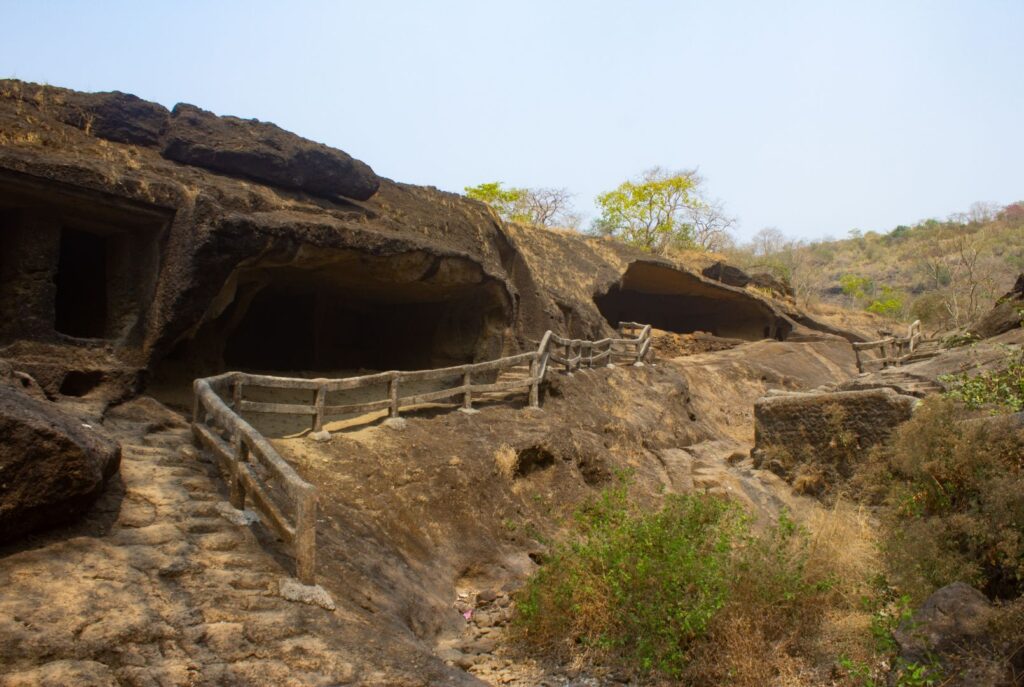
How long does it take to visit the Kanheri Caves?
How long you’ll spend at the Kanheri Caves depends on your pace.
For those who are deeply interested in such historical sites and want to take their time exploring every nook and cranny, you can expect to spend about 3 hours.
Otherwise, 2 hours should be enough.
But that’s just for the caves itself. As you already know, you also need to reach Sanjay Gandhi National Park and make your way to the caves. All in all, plan for a half-day trip.
For those also interested in the other attractions that Sanjay Gandhi National Park has to offer, like a tiger safari, then you’ll want to plan for a full-day trip to the park.
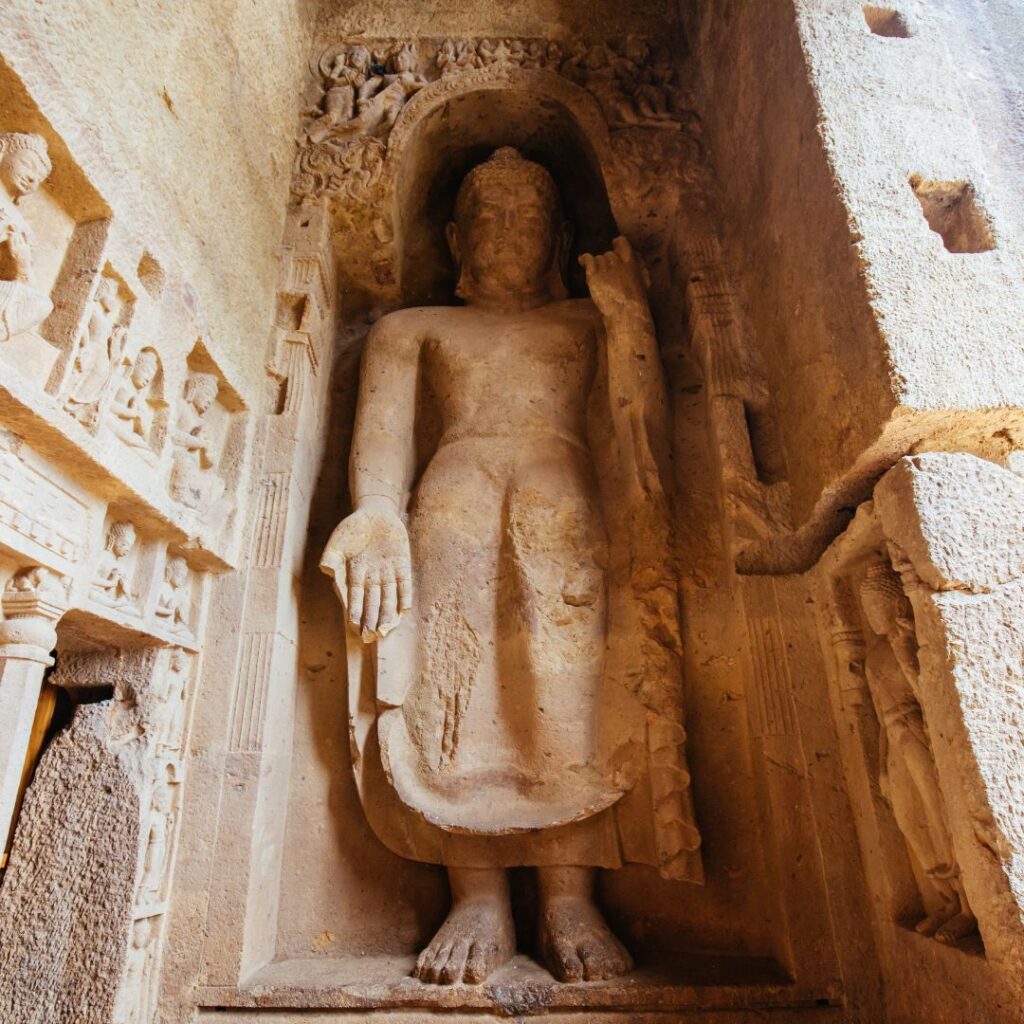
Are the Kanheri Caves worth it?
Being located a little out of the way from most other popular places in Mumbai, you’re probably wondering: is a trip to the Kanheri Caves worth it?
In fact, the Kanheri Caves aren’t even the only ancient cave temples in the city, with others like Elephanta Island or the Mahakali Caves located within easier reach.
However, I can tell you from personal experience that the Kanheri Caves are better than any of the other ancient cave temples in Mumbai.
Not only is the site much larger than the others, it’s also much older, with some of the caves at Kanheri being up to 500 years older than those at Elephanta.
Being located in a national park, away from Mumbai’s city chaos, also adds to its appeal.
And, because they’re located on the northern outskirts of the city, the Kanheri Caves are closer to the airport than all the other popular sites downtown. So, even if you’re only in Mumbai for a quick stopover, it’s easy to reach.
If you’re a history buff in Mumbai, then a visit to the Kanheri Caves is absolutely worth it.


